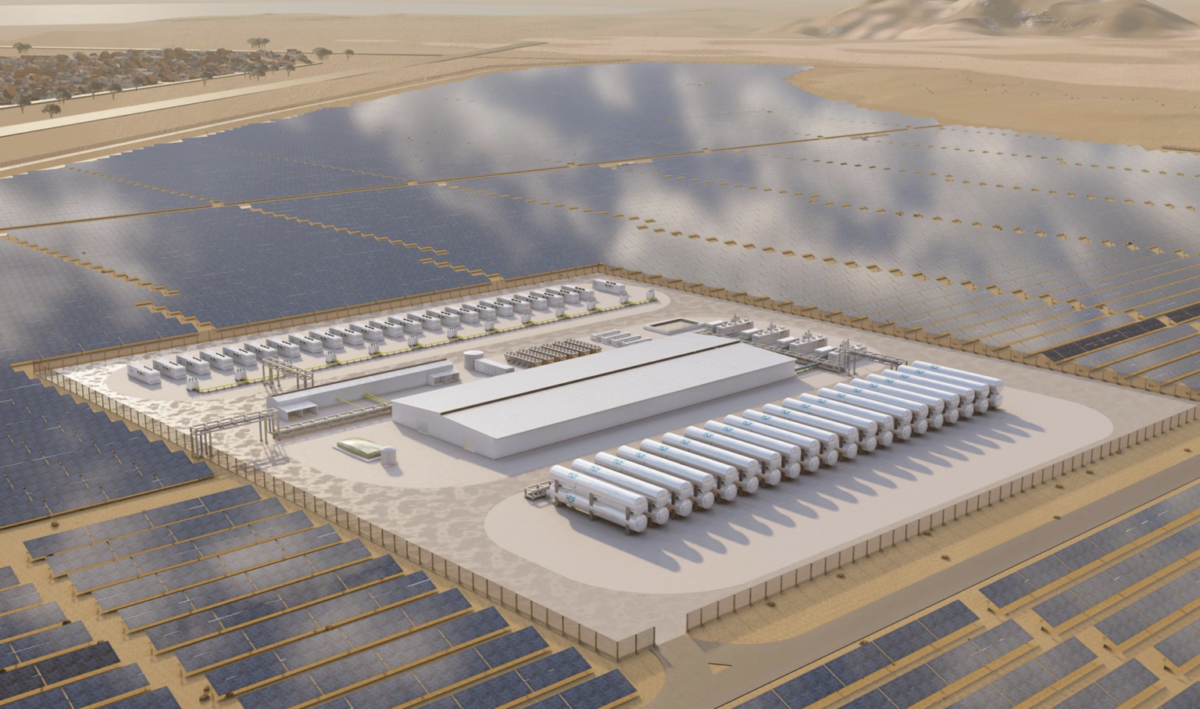- European Commission President Ursula von der Leyen and President of Namibia Hage Geingob endorsed the roadmap for the EU–Namibia strategic partnership on sustainable raw materials value chains and renewable hydrogen, supported by €1 billion in investments by the EU, its Member States and European financial institutions.
- The EU will also support an upcoming study for the development of the Port of Walvis Bay into an industrial and logistics hub for the region, contributing to its integration and economic development.
- With an abundance of natural wind and solar resources, there are a number of large green hydrogen/ammonia projects under development in Namibia. Find out more about the projects HERE

Rendering of HDF’s hydrogen power plant in Swakopmund ,Namibia. Image credit: HD
Roadmap for the years 2023 to 2025
In November 2022, Namibia and the EU signed a Memorandum of Understanding establishing a strategic partnership on Sustainable Raw Materials Value Chains and Renewable Hydrogen. The operational roadmap, launched and endorsed today and for the upcoming period 2023–2025, details the concrete actions in which the partnership will advance its goals, in close cooperation with EU and Namibia financial and private sector stakeholders.
Related news: US$ 10 billion green hydrogen project gaining traction in Namibia
The actions in the roadmap follow the six pillars of the Memorandum of Understanding:
- Integration of value chains, including by working with the industry to identify, promote and facilitate cooperation in the exploration and commercial development of critical raw material projects.
- Cooperation to leverage environmental, social and governance criteria, including by mapping and assessing abandoned mines and supporting Namibia in using Earth Observation and remote sensing methods for resource exploration, land use planning and management.
- Mobilising funding for soft and hard infrastructure, including for selected mining, refining and mineral green processing projects (water, rail, renewable energy) and for the upgrade of main transport corridors (port, rail, roads).
- Capacity building, training and skills development, including identifying training and skills needs along the raw material and green hydrogen value chains and enhancing the relevant technical and vocational training offer by Team Europe in cooperation with the industry.
- Co-operation on research and innovation, including facilitating studies and joint research projects and research and business networking along the entire critical raw material value chain.
- Regulatory alignment, including supporting Namibia in developing a national strategy for critical raw materials and enacting a synthetic fuels act to create an enabling environment for hydrogen and synthetic fuels industry, and ensure compatibility with international green fuels, certification and standards.
Development of the Port of Walvis Bay
The EU will also support an upcoming study for the development of the Walvis Bay port, the entry point from the Atlantic side to the Walvis Bay – Maputo Corridor, one of the eleven Strategic Corridors the EU envisages to support as part of the EU-Africa Global Gateway Investment Package. Its location makes it a natural gateway for international trade to the Southern African Development Community, a region with over 300 million inhabitants.
With EU support, the Port of Antwerp and Bruges International will develop a masterplan that covers multimodal infrastructure, spatial planning and market organisation for the Port of Walvis Bay to carry out this transformation and become a regional logistics and industrial hub for the green hydrogen and derivatives economy. The EU will also support the Namibian Ports Authority in achieving operational excellence.
Author: Bryan Groenendaal















